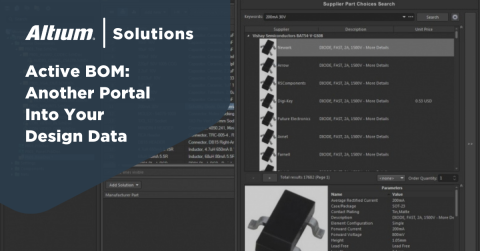Excel Versus BOM Software: When Your Data Management Tool Needs an Upgrade
At our house, creating a grocery shopping list can become a multi-day event. Stage 1 of the extravaganza involves a careful but not well-planned review of all available grocery store ads. Stage 2 moves on to the analysis of those advertisements. One never knows where bargains may lurk. Then, Stage 3 takes us to the pantry for a study of our available resources while Stage 4 measures our budget against our needs. When we eventually stroll through the grocery store with list in hand, all planning goes out the proverbial window as wife, kids, and husband diverge into grocery store scout teams.
Don’t treat your manufacturing and design bills anymore lackadaisically. While you could start organizing column, character, quality, and cost in a spreadsheet, it might be best to order inventory and list within a bill of materials file. A template can make the structure easy to work through, and data sure beats out an excel file any day of the week for manufacturing output information.
Making a List
A similar (but hopefully much more developed) general set of process steps apply to the early stages of PCB design and the creation of a Bill of Materials (). As we move to assembling the for a project, the task becomes easier because of the different types of management software offered by manufacturers. But what if your budget doesn’t allow access to those bell-and-whistle filled software suites? Can a simple spreadsheet take care of your needs?
The answer to the spreadsheet question is: “Yes, Maybe, and No.”
On the “yes” side, most of us create and maintain the initial engineering within a spreadsheet. We use spreadsheets to import data from contractors and vendors. After all, the spreadsheet works as a great tool for arranging the data in sets, performing calculations, and outputting the data to other tools. From the perspective, using a spreadsheet allows us to generate a list of needed for developing and completing a product. For truly small PCB projects, a spreadsheet can become a “yes” and “maybe” response.
But what about large projects that involve multiple project teams with some members working locally while others work remotely? For those projects, the answer is a clear “no.” Here’s why.
Managing large systems designs and immense production schedules can be a bull.
Share the Good Times!
A Bill of Materials provides information about, vendors, manufacturers—and, perhaps, most importantly—about the relationships between those groups. Advanced software allows your design team to create BOMs from the schematic, the layout, or from components used in the design.
Throughout the PCB design process, various team members along the supply chain, including engineers, PCB design services, vendors, and others, use the BOM to make decisions and manage assets as the project moves from concept to prototyping and eventually to production. As an example, an engineering team may need to understand the operating relationships between components within a product. At the same time, other members of the design team may need to review the vendor list, financial information, or delivery estimates.
Collaboration is Key!
Because of its complexity, the BOM requires management. On one hand, the BOM software must serve multiple users who need simultaneous access. On the other, the BOM must recognize the relationships between stored items. The BOM also works as a record management tool that ensures that the most current revisions are visible to all members of various different teams. This management capability pays dividends as engineering teams focused on costs and tasks hand over the PCB project to manufacturing teams that build the product. Both teams need the ability to work from the same product data.
While spreadsheets may provide some of the right tools for managing small projects, managing even small and mid-size PCB design and production teams requires tools that support a much larger view of the business world. BOMs can save costs through real-time, simultaneous access to repositories of product information. Having this type of access reduces opportunities for errors that can occur when copy-pasting or transferring data from one BOM to another.
Collaboration through a BOM can also reduce costs because of operational transparency. Anyone within the enterprise can access the BOM and view cost and availability information. Many BOM packages also allow business partners—such as the supply chain or third-party design teams—to access the information. This unified access ensures that the right go into the product.
Don’t get lost in excel spreadsheets ever again
Software Integration Works!
Most software packages accept the automatic transfer of CAD information. For example, you can generate a from a CAD assembly that includes images of the components and mechanical. Integrating the CAD, Enterprise Resource Planning (ERP), and Product Lifecycle Management (PLM) systems synchronize design, engineering, and manufacturing tools.
While integration allows different types of software to communicate during the design process, software can use different formatting options and templates. With this capability, you can use the can export to different output file formats. Advanced software tools export to the CSV, XLS, PDF, Tab Delimited Text, HTML, and XML spreadsheet formats.
With reliable software like Altium on your side, you can optimize the PCB development process and keep track of various files, formats, and templates. And with the added functionality of Active, your design teams can save time and minimize costs by providing manufacturers with the correct format from the get-go. Talk to an Altium expert today to learn more.










